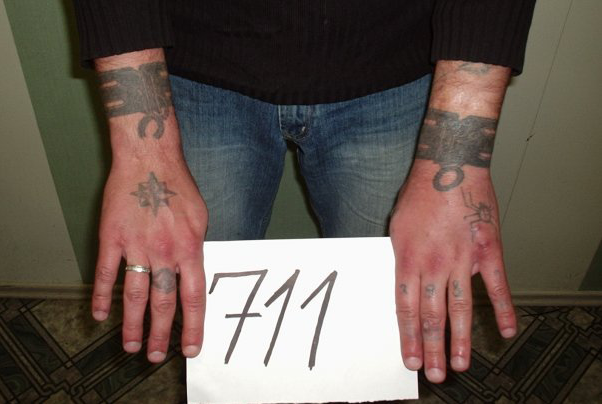Japanese Criminal Tattoos And Their Meanings. And yet most people in Japan are unaware that not too long ago for a time during the Edo Period 1603-1868 the go-to form of punishment for non-violent crimes was a tattoo right in the center of your forehead. Awa 阿波 now Tokushima prefecture tattooed lines on the forehead and the arm.

Japanese tattoos have a strong cultural meaning attached to them which make it quite symbolic to the Japanese culture and people. However this custom was forgotten by the Edo period 1603 to 1868 during which tattoos held two different meanings over time. In medieval times The Japanese king would punish the Prisoners by giving them a Bokkei tattoo.
A lot of them are simple lines around the arm.
In the Edo period 1600-1868 tattoos were used by authorities as a punishment. Another part of Japan gives tattoos on the arms of the criminals. As time passed criminals and slaves started inking their bodies with Japanese tattoos to mark their status in society. Japanese Tattoos Meaning.
This tattoo would distinguish them from common civilians and give a heads up about their true identity to anyone they meet. These themes include religion folklore and natural beauty. However this custom was forgotten by the Edo period 1603 to 1868 during which tattoos held two different meanings over time. Traditional Japanese Tattoo Meanings.
Besides the variety in tattoo designs the. This tattoo would distinguish them from common civilians and give a heads up about their true identity to anyone they meet. In Japan as with many other East Asian countries tattooing had a period of suppression due it being associated with sin and criminality many thought of tattooing as defacing our god-given bodies while others thought tattoos meant you belonged to the Japanese mafia called yakuza. Japanese tattoos have a strong cultural meaning attached to them which make it quite symbolic to the Japanese culture and people.
The Yakuza began using tattoos as a pledge of sorts to show their commitment to the gang. Japanese Tattoos Meaning. However this custom was forgotten by the Edo period 1603 to 1868 during which tattoos held two different meanings over time. This tattoo would distinguish them from common civilians and give a heads up about their true identity to anyone they meet.
← japanese demon tattoo drawings geometric flower pattern tattoo →